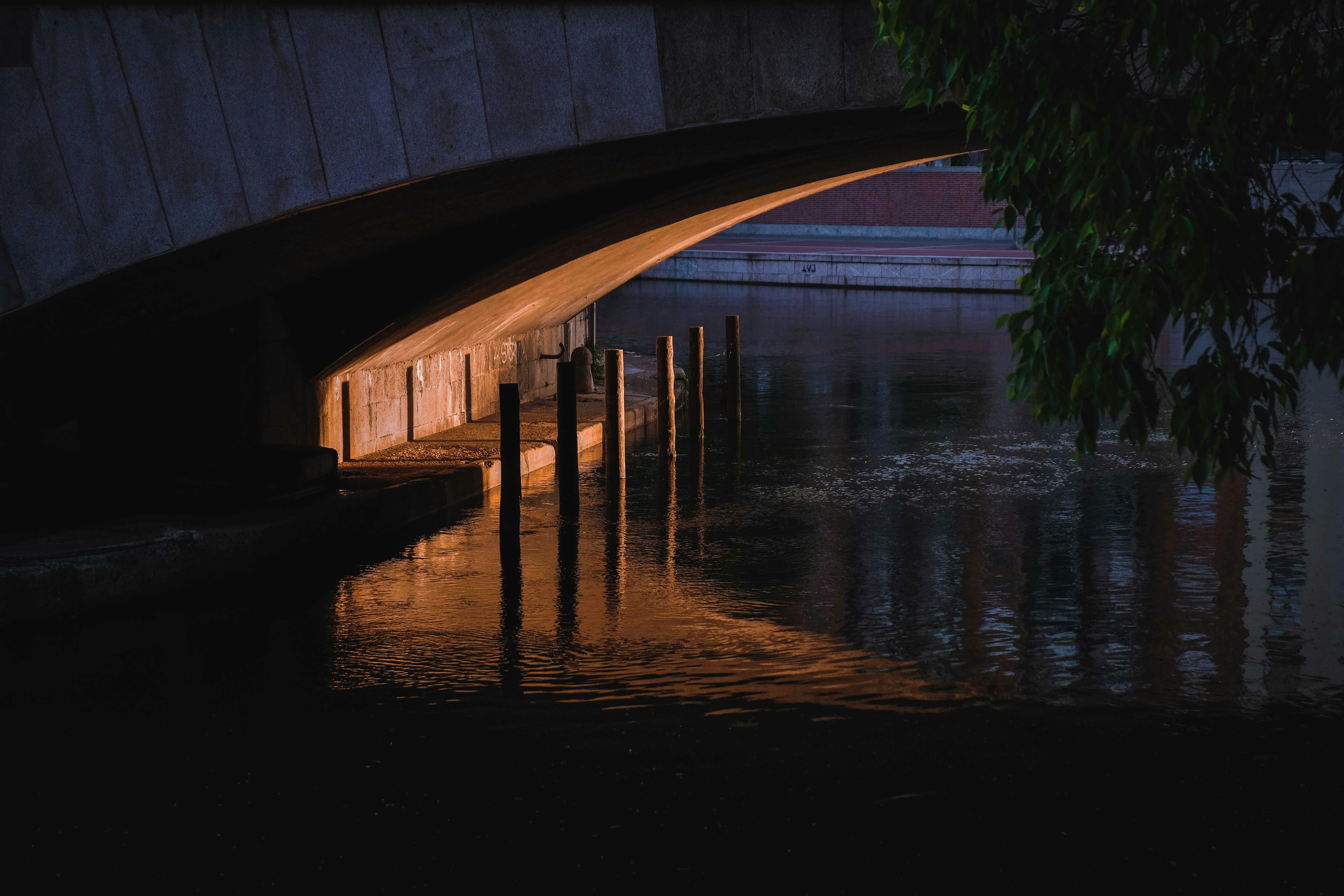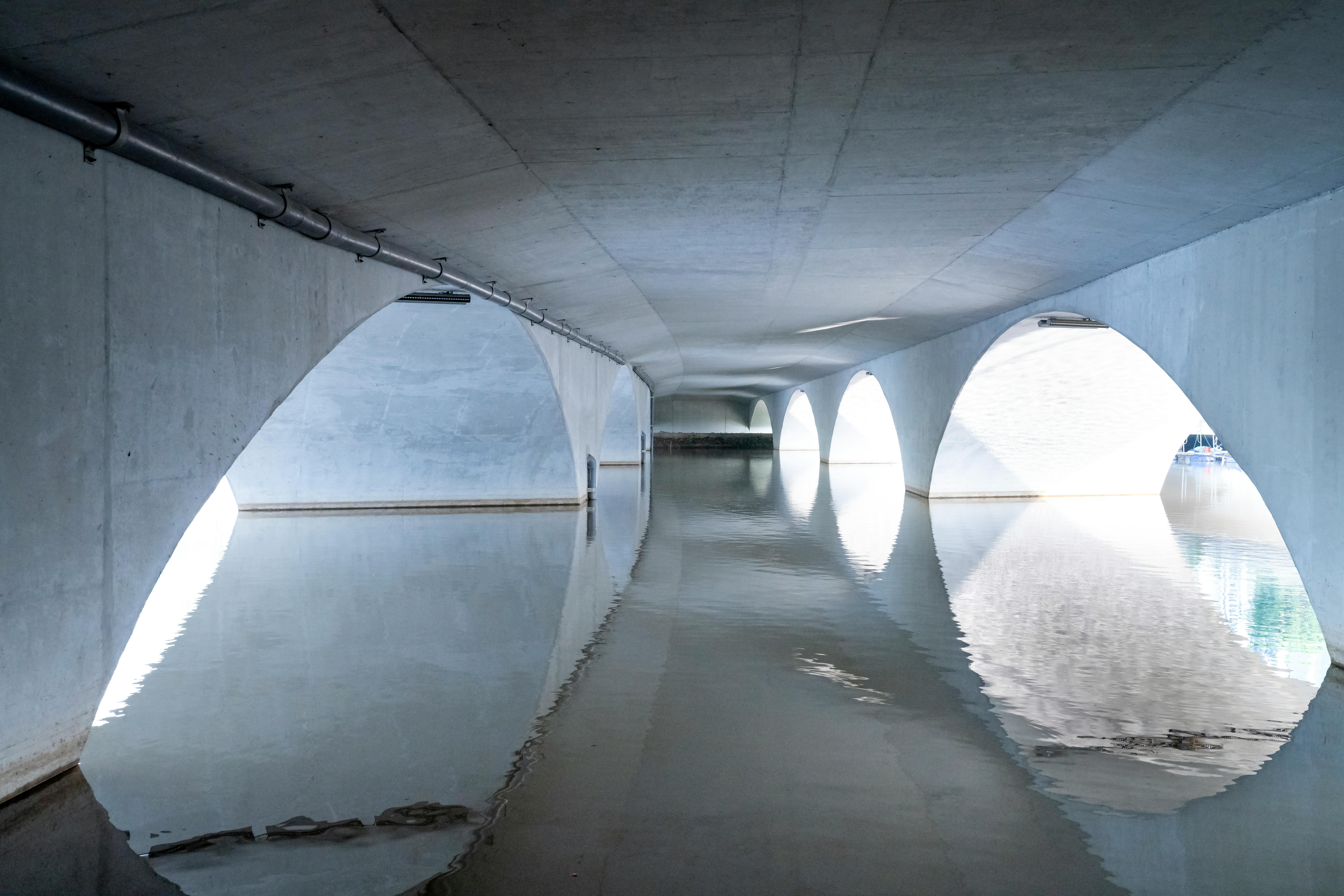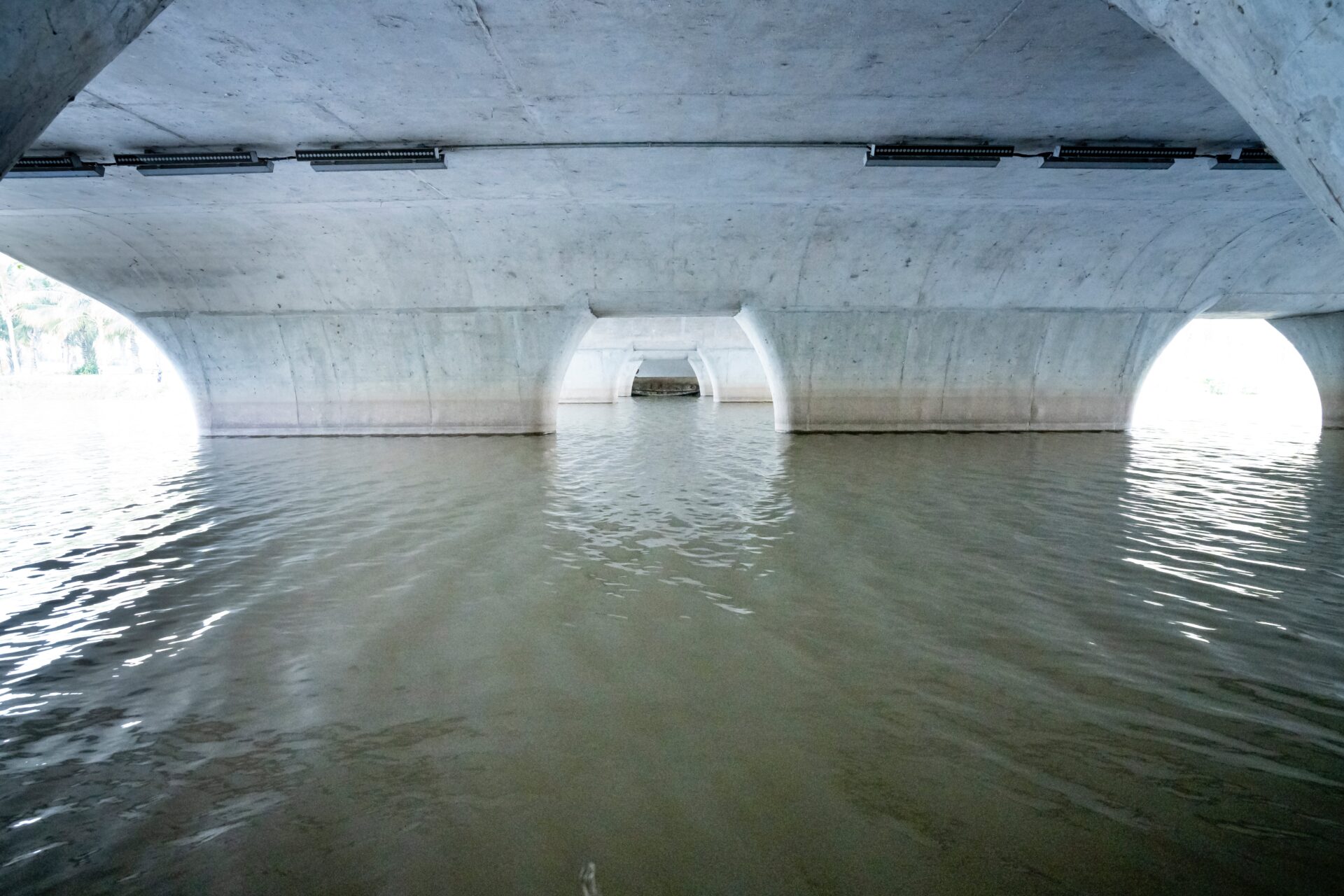Beneath the Surface: Detecting Water Leaks Under Concrete is an important guide for property owners, plumbers, and engineers. It provides useful information on how to detect and repair water leaks under concrete surfaces. This guide covers a range of topics from the causes of water leaks to the tools and techniques used to locate them. It also includes detailed instructions on how to make a comprehensive assessment of the damage caused by a leak, and offers advice on how to choose the best repair method. This guide is an invaluable resource for anyone wanting to make sure their property is safe from water damage.The most effective way to detect water leaks under concrete is by using acoustic leak detection methods. This involves placing a microphone or hydrophone into the ground and listening for any water flow sounds. Other methods include using a thermal imaging camera to detect any temperature differences caused by the presence of water, or using a tracer gas detector to detect any gas bubbles that are created when water escapes through cracks in the concrete.
The Benefits of Finding Water Leaks Early
Water leaks can lead to costly repairs, water damage and costly bills. Finding and fixing water leaks early on can be a great way to save money and prevent major problems in the future. Early detection of water leaks can help avoid costly repairs, reduce water damage, and help conserve water. Here are some of the benefits of finding and fixing water leaks early:
1. Cost Savings: Finding a water leak early can save you money as it will likely require fewer parts or materials to fix than if the leak were to go unnoticed for a longer period of time. It is important to get professional help as soon as you notice any signs of a potential leak so that it can be fixed before it gets worse.
2. Prevent Water Damage: By finding and fixing a water leak early, you can prevent extensive damage to your home due to flooding or moisture buildup which could lead to mold or other issues down the line. Water damage can be expensive to repair so catching the problem early on is key.
3. Conserve Water: Leaks often go unnoticed for long periods of time, resulting in wasted water that could have been conserved if it was detected earlier. By finding and fixing your leak quickly, you will not only save money but also help conserve natural resources.
Overall, finding and fixing water leaks early is essential in order to avoid costly repairs, reduce water damage, and conserve resources. If you suspect that you have a leak in your home, contact a licensed plumber as soon as possible so they can investigate and fix the issue promptly.
Identifying Possible Sources of Leaks
Leaks can come from a variety of sources and can be difficult to pinpoint. It is important to properly identify the source before attempting to repair the leak. Some possible sources include toilets, sinks, bathtubs, showers, water heaters, washing machines, dishwashers, refrigerators and pipes.
Toilets are one of the most common sources of leaks. They can be caused by loose connections or worn out parts such as flappers or flush valves. If a toilet is leaking from its base it could indicate a cracked tank or bowl. It is important to check for any visible signs of damage before attempting any repairs.
Sinks are another possible source of leaks. Common causes include worn out seals or washers, loose connections or damaged pipes. If the sink is leaking from the faucet it could mean that the washer needs to be replaced or that the connection needs to be tightened.
Bathtubs and showers may also be prone to leaking due to worn out seals or washers, damaged pipes or loose connections. Check for any visible signs of damage and replace any worn out parts before attempting repairs.
Water heaters are also prone to leaking due to corroded pipes or faulty valves. Inspect all exposed pipes for corroded areas and replace any faulty valves before attempting repairs.
Washing machines and dishwashers are also potential sources of leaks due to worn out hoses, loose connections or damaged pipes. Check all exposed hoses for signs of wear and tear and inspect all exposed pipes for damages before attempting repairs.
Refrigerators may also be prone to leaking due to clogged condensation lines, blocked drainage tubes or faulty valves. Inspect all exposed lines and tubes for clogs and replace any faulty valves before attempting repairs.
Finally, pipe leaks can occur due to corrosion, poor installation or incorrect material choice when installing new plumbing fixtures in an existing system. Inspect all exposed piping for signs of corrosion or poor installation workmanship before attempting repairs.
Common Signs of Water Leaks
Water leaks can be difficult to detect, especially if they’re located in hard-to-reach places. However, there are several common signs that you may have a water leak in your home. The most obvious sign is an increase in your water bill, but a few other indicators include damp or discolored patches on the walls or ceiling, mold or mildew growth, a musty smell, and water pooling around your home’s foundation. If you notice any of these signs in your home, it’s important to have the issue looked at by a qualified plumbing professional right away.
Leaky pipes can lead to extensive damage to your home if left unchecked. Even small leaks can end up costing you significantly more money over time as they contribute to higher water bills and damage to the structure of your home. Additionally, a leaking pipe can cause mold and mildew growth that could have serious effects on both the health of your family and the value of your home.
Fortunately, there are ways to detect water leaks early on before they become too costly or cause too much damage. It’s always a good idea to keep an eye out for any signs of moisture seeping into walls or floors as well as any sudden spikes in water usage or water bills. If you notice anything out of the ordinary, it’s best to contact a professional plumber right away so they can investigate further and find where the leak is coming from.
Examining Concrete Slabs
When examining a concrete slab, it is important to check for any cracks or signs of damage. Cracks can occur due to water infiltration, settlement, or soil movement. It is also important to look for signs of spalling, which is when the top layer of the concrete begins to flake away due to environmental factors such as water or freeze/thaw cycles. Additionally, it is important to check for any areas that may have sunken or shifted due to poor compaction of the soil beneath the slab.
It is also advisable to check for any signs of corrosion on any embedded metal components in the slab. This can be caused by water infiltration and will cause the metal components to rust and weaken over time. Furthermore, it is important to inspect the expansion joints in between each slab section. Expansion joints are necessary in order to allow for movement between different sections without causing damage. They should be properly sealed and free from debris in order for them to function correctly.
Finally, it is important to check for any signs of mold or mildew on the surface of the concrete slab. This could indicate a moisture problem which needs addressing in order to prevent further damage and compromise structural integrity. It is also recommended that a professional concrete contractor be consulted in order to ensure that all aspects of the slab are inspected and evaluated properly before making any repairs or installing new slabs.

The Challenges of Locating and Identifying Water Leaks
Water leaks can be difficult to locate and identify without the right technology. Many times, plumbing leaks or water damage can go undetected for long periods of time, leading to expensive repairs and wasted resources. The key to success is finding the source of the leak quickly and accurately, and this requires specialized knowledge and equipment. Here are some of the challenges involved in locating and identifying water leaks:
The first challenge is determining where the leak is located. If the leak is underground or behind a wall, it can be difficult to pinpoint its exact location. Specialized equipment such as listening devices, thermal imaging cameras, and pressure testing tools may be necessary to locate a hidden water leak. Once the location is identified, further investigation is needed to determine what type of repair is required.
Another challenge is identifying what type of material has been damaged by the water leak. Different materials require different repair methods, so it’s important to accurately identify what type of material has been affected by the leak in order to perform the correct repair. For example, a PVC pipe will require different repairs than a copper pipe.
Finally, it’s important to determine how much damage has been done by the water leak before any repairs are made. This can involve assessing any structural damage that may have occurred due to water seepage as well as determining how much water has been lost due to the leak. This information will help determine how extensive repairs need to be in order to fix the problem.
Locating and identifying water leaks can be a challenging task for even experienced professionals. It requires specialized knowledge and tools in order to identify where a leak is coming from and how best to make repairs. Taking these steps early on can help minimize damage from a water leak and save time and money in costly repairs down the road.
Understanding the Soil and Drainage Conditions Around Your Property
It is important to be aware of the soil and drainage conditions around your property. This information can help you make decisions about landscaping, building projects, and other outdoor activities. Knowing the soil type, drainage patterns, and water table levels can help you plan accordingly.
The type of soil on your property will affect how water is absorbed or held in the ground. Sandy soils drain quickly while clay soils hold more water. Other types of soil may have a combination of both characteristics. You may also have soils that are prone to flooding or poor drainage. Understanding these properties can help you when planning any outdoor activity or construction project.
Drainage patterns refer to how water flows over your land as it moves from higher to lower elevations. This can be affected by the slope of the land and the types of soil present on your property. Paying attention to these patterns can help you determine where best to build structures or direct water away from an area.
The water table level is also important to consider when planning outdoor activities or construction projects around your property. The water table is the top level of underground water found in the soil or rock beneath it. If this level is too high, it may cause problems with flooding or poor drainage on your property.
It’s important to understand all of these elements when planning any activity on your property. Knowing about soil types, drainage patterns, and water table levels will help you make informed decisions about landscaping, building projects, and other outdoor activities.
Non-Invasive Methods for Detecting Water Leaks Under Concrete
Detecting water leaks under concrete can be a daunting task. Many traditional methods require costly and time-consuming excavation or other invasive techniques. Fortunately, advances in technology have made it possible to detect water leaks with non-invasive methods.
The most common non-invasive method is using a listening device. This device functions like a stethoscope and listens for the sound of flowing water beneath the concrete. By placing the listening device on the concrete surface, technicians are able to pinpoint the source of water leakage. This method is often used to detect small leaks in pipes that are difficult to locate with traditional methods.
Another non-invasive method is using an infrared camera. This method involves scanning the surface of the concrete with an infrared camera. The camera detects changes in temperature on the surface, which can indicate water leaking beneath it. This method is particularly useful for detecting large areas of leaking water or wet spots that may be difficult to identify with traditional methods.
Ground penetrating radar (GPR) is also a non-invasive method for detecting water leaks under concrete. GPR uses electromagnetic waves to penetrate through the ground and detect changes in the subsurface structure that may be indicative of a water leak. This method can be used to accurately locate both large and small leaks beneath concrete surfaces without excavation or other invasive techniques.
Using non-invasive methods such as listening devices, infrared cameras, and GPR has revolutionized how water leaks are detected under concrete surfaces. These technologies provide fast, accurate results without requiring costly excavation or other invasive techniques that can disrupt daily operations or damage property.

Conclusion
Having a water leak under concrete can cause serious problems and long-term damage to properties. It is important to detect any water leaks as soon as possible to avoid further issues. The best way to detect a water leak beneath concrete is by using specialized equipment such as ground penetrating radar, acoustic leak detection, or infrared thermography.
These methods are accurate and non-invasive, meaning that they do not require you to break up the concrete or cause any damage in order to locate the leak. They can also help you pinpoint the exact location of the leak, so that you can make repairs quickly and efficiently.
Overall, detecting water leaks beneath concrete is essential in order to prevent them from causing further damage and costly repairs. By using specialized equipment such as ground penetrating radar, acoustic leak detection, or infrared thermography, you can accurately detect any water leaks beneath concrete without causing any damage or disruption.

